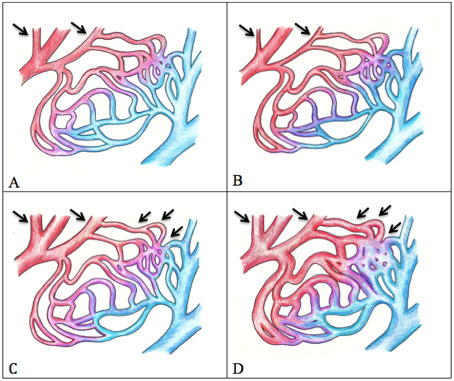Figure 1.

Autoregulation of brain arterioles and pathophysiology. Baseline (A): When blood pressure is normal, brain arteriole blood vessels are neither constricted nor dilated. Increased blood pressure (B): The brain seeks to maintain a constant blood flow. The brain arteriole blood vessels constrict. Decreased blood pressure (C): As pressure falls, brain arteriole dilation occurs. Blood flow to the brain remains unchanged. Dysautoregulation or second impact syndrome (D): A serious disruption occurs. The brain acts as if blood pressure is low when it is not low; it is normal or may be elevated. Brain arteriole blood vessels dilate and blood rushes into the brain and results in a massive rise in intracranial pressure. Within minutes, the brain can herniate, resulting in coma.
